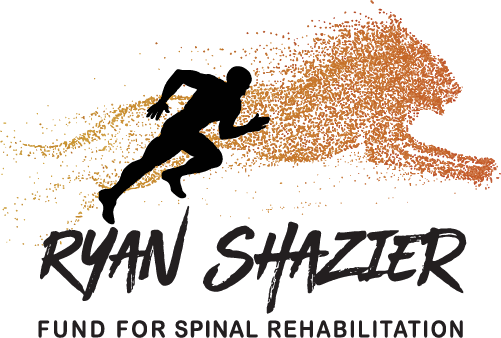A life altering injury cannot ground this artistic athlete
Talking to Carrie Bach, a 42-year-old spitfire of a woman from the outskirts of Eire, PA, one is struck by her effervescent personality and her “can-do” attitude. She’s a trained ballerina and attended college for dance and business. As all artists do, she worked a day job, and performed as much as she could. One day, she saw an advertisement for a swing dancing group. “Well,” Bach mused, “This could be fun!” She started attending.
The Life of Riley
Her future husband, Geoff, was teaching and performing as a swing dancer. His partner fell ill, and knowing that Bach was a trained dancer and choreographer, he asked her to fill in. Bach agreed. “And, just like the movie ‘Dirty Dancing,’ we fell in love and the rest is history!” Bach and her husband toured as swing dancers and were called to performed for Ed McMahon, The band rearranged Benny Goodman’s signature tune “Swing, Swing, Swing” to match Bach’s choreography—a high complement. They also toured as performers on a cruise ship, and Bach was the mascot for a minor league basketball team—on stilts!
The Break—At Home
“We were living such an active life, both working and performing…” Bach trails off, “And in November 2019 my accident happened in my living room.” She had yoga silks hanging for exercise. “The ceilings are low; I was a foot off the ground. I slipped face down, hit my head, and immediately knew that something was wrong.” Bach laid on the floor, conscious, motionless, and in pain for 40 minutes until Geoff arrived.
Rehab Limits
Bach’s spinal cord injury is at the C5-C6 level; her vertebrae are fused C5-C6 in the front and C4-C7 in the back. She does not remember much about her first weeks in the hospital. When she got to rehab, “I was ready to get to work,” Bach says, “but looking back, the rehab I received was more about getting me ready to live with a disability rather than to work through the challenges of getting stronger and better.” She relays that most of the time the therapy consisted of getting fitted with and working with braces. “I have one that goes from my torso to my feet,” she explains. She was discharged from inpatient therapy in five weeks, and only received five weeks of outpatient therapy, not nearly enough for the type and severity of her injury. “I felt like I blew through my therapy (allocation),” says Bach, “and knowing what I know now, it wasn’t enough.
Home Modifications
Bach, ironically, is the COO of a firm that helps disabled people with housing modifications, in-home attendants, and other services, a position she held before her injury. “We were able to modify our home, and I have a full-time attendant. I work full-time, and Geoff does too.”
Therapy Thresholds
As for therapy, the insurance company, as with myriad of spinal cord injured patients, is stingy. Bach tries to do exercises on her own with Geoff, but “working full time with the limitations my arms and hands have, sitting in my chair all day, and Geoff working full-time too, we are both exhausted—and we are not even sure we are doing things correctly.” Bach’s body, once strong and supple, feels like it is locking in stone. “I need the therapy and the resources,” she opines.
Shazier Connection
When Bsach saw the launch of the Ryan Shazier Fund, she said that gave her hope. “I called and emailed them,” she says, excitedly, “I was like that child in the classroom, raising her hand saying ‘Pick me! Pick me! I’m your girl!’” Shazier and Bach connected–both athletes, both spinal cord injury warriors. With the connection to Shazier and what his Fund’s mission is, Bach said she felt hopeful, and renewed her commitment to herself and her recovery. For an athlete like Bach, who could teach her body to move with strength and beauty, the sidelines are not for her.
Dance Prof Reunion
And, the sidelines are not for her former college dance professor, who recently retired and contacted Bach. “She offered to work with me!” exclaims Bach. “I can stand on one leg, and she can work with that to help me through the basic ballet exercises—because they are designed to have you think about how your body is moving.” Bach has a set of parallel bars sitting in her Amazon cart. Bach refuses to accept that her chair is part of the rest of her life; that it defines her. “My identity is not that of a COO or a person with a disability,” says Bach, “I am a dancer and an athlete.”
Shalieve
Wisdom

Carrie Bach’s Shaleive Wisdom
*Help Others: “I can’t perform anymore, but I can teach. I helped my nieces with front-walkovers on video chat, and it’s a good feeling.”
*Do something right every day: “There were days I didn’t want to get out of bed, but I did and set a goal to do something right, even if it’s opening and closing your own water bottle. I could end the day with a feeling of success.”
*Be Determined: “Draw on your past successes to create your new successes. I learned so many physical skills, and now, with the new help offered by my dance prof, I’m setting new goals.”



